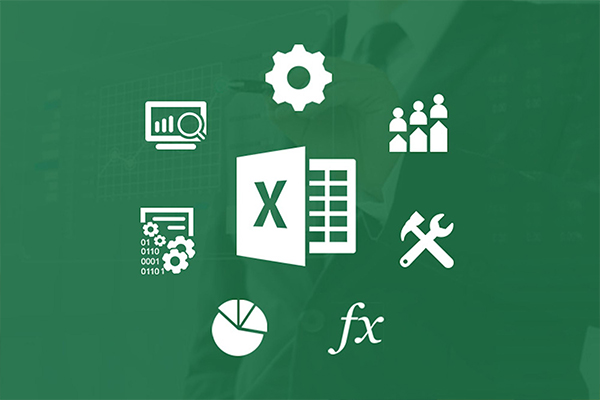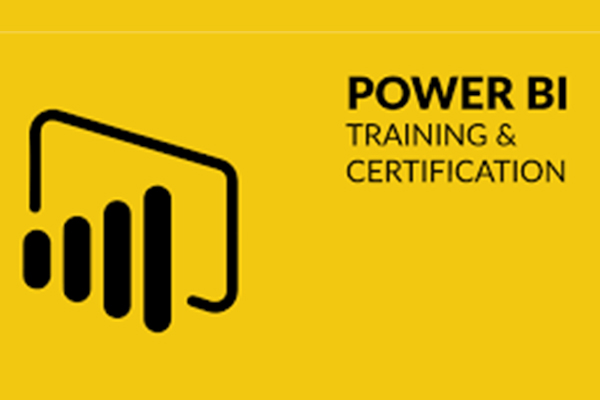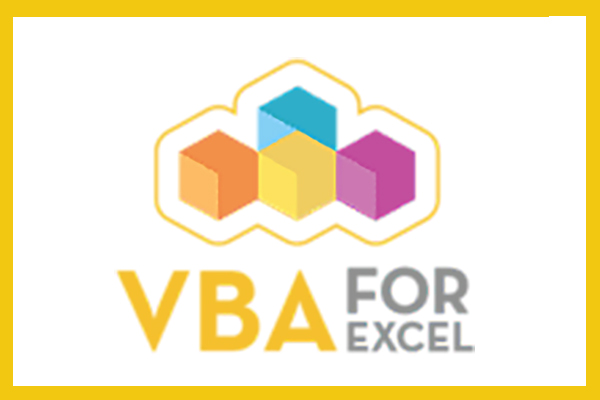Courses
Popular Courses
$349.00
Microsoft Excel Course
An Excel training course typically covers a range of topics, starting from the basics and progressing to more advanced functionalities. Here is a general outline of Excel training course contents
1.Introduction to Excel
- Navigating the Excel interface
- Understanding workbooks, worksheets, and cells
- Entering and editing data
- Saving and opening files
2. Essential Excel Function
- Working with formulas and basic calculations
- Using built-in functions (e.g., SUM, AVERAGE, COUNT)
- Understanding cell references (relative, absolute, mixed)
3. Formatting and Styling
- Formatting cells (font, alignment, borders, and colors)
- Applying conditional formatting
- Working with cell styles and themes
4. Data Manipulation and Analysis
- Sorting and filtering data
Using data validation to control inputs
- Working with tables for data organization
- Introduction to pivot tables and pivot charts
5. Advanced Formulas and Functions
- Logical functions (IF, AND, OR)
- Lookup and reference functions (VLOOKUP, HLOOKUP, INDEX, MATCH)
- Text functions (CONCATENATE, LEFT, RIGHT, MID)
- Date and time functions
6. Data Visualization
- Creating and modifying charts
- Adding titles, labels, and legends to charts
- Customise chart elements
- Using sparklines and conditional formatting
7. Data Analysis Tools
- Using goal seek and solver for what-if analysis
- Performing data analysis with scenarios
- Creating and interpreting data tables
- Introduction to descriptive statistics (average, standard deviation, etc.)
8. Collaborating and Sharing
- Protecting worksheets and workbooks
- Tracking changes and comments
- Sharing workbooks and collaborating with others
- Printing and exporting data from Excel
Course completed
$299.00
Power BI Course
A Power BI course typically covers a range of topics related to data visualization, analysis, and reporting using Microsoft Power BI. Here is a general outline of Power BI course contents
1.Introduction to Power BI
- Overview of Power BI and its components
- Understanding Power BI Desktop
- Exploring the Power BI user interface and workspace
2.Creating Visualizations
- Using the different visualizations available in Power BI (charts, tables, matrices, etc.)
- Customizing visuals (formatting, colors, labels, etc.)
- Applying filters and slicers to interact with data
3. Building Data Models
- Designing and creating relationships between tables
- Defining measures and calculated columns using DAX (Data Analysis Expressions)
- Working with hierarchies and drill-through actions
4. Data Connections and Data Transformation
- Connecting to various data sources (Excel, databases, cloud services, etc.)
- Importing and transforming data using Power Query Editor
- Combining and shaping data from multiple sources
5. Data Analysis and Exploration
- Utilizing the Power BI Desktop's query and data exploration capabilities
- Creating calculated columns and measures for advanced analysis
- Using advanced filtering and sorting techniques
6. Power BI Dashboards and Reports
- Designing interactive and visually appealing dashboards
Building reports with multiple pages and sections
- Applying interactivity and drill-through actions
7. Sharing and Collaboration
- Publishing reports and dashboards to Power BI Service
- Sharing reports with colleagues and stakeholders
- Collaborating on dashboards and reports
8. Advanced Topics:
- Power Query advanced transformations and M language
- Power BI integration with other tools and platforms (Excel, SharePoint, etc.)
Course completed
$299.00
Visual Basic (VB) course
A Visual Basic (VB) course typically covers various topics related to programming with Visual Basic. Here is a general outline of Visual Basic course contents:
1. Introduction to Visual Basic
- Understanding the basics of programming
- Overview of the Visual Basic integrated development environment (IDE)
- Creating a new project and exploring the project structure
2. Variables, Data Types, and Operators
- Declaring and using variables
- Understanding data types (integer, string, boolean, etc.)
- Working with arithmetic, comparison, and logical operators
3. Control Structures
- Using decision-making structures (If-Then, Select Case)
- Implementing loops (For, While, Do-While)
- Managing program flow with branching statements (GoTo, Exit)
4. Procedures and Functions
- Creating and calling procedures
- Passing arguments to procedures
- Writing functions and returning values
5. Arrays and Collections
- Declaring and manipulating arrays
- Understanding multidimensional arrays
- Working with collection objects (ArrayList, Dictionary)
6. Error Handling and Debugging
- Handling runtime errors with error handling techniques (Try-Catch-Finally)
- Using debugging tools and breakpoints
- Troubleshooting and resolving common programming errors
7. Object-Oriented Programming (OOP) Concepts
- Introduction to OOP principles (encapsulation, inheritance, polymorphism)
- Creating and using classes and objects
- Understanding properties, methods, and events
8. Scenarios based on OOP concepts
- Protecting worksheets and workbooks
9. User Interface Design
- Creating graphical user interfaces (GUI)
- Working with form controls (buttons, labels, textboxes)
- Responding to user events (clicks, keypresses, etc.)
10. Advanced Topics
- Working with external libraries
- Interacting with Excel or other Office applications
- Creating and using custom controls
- Building user-friendly interfaces with menus, dialog boxes, and notifications
Course completed
Testimonial
Our Students Say!

John D
"I recently had the privilege of attending an Excel training session led by Sairam, and I must say it was an exceptional experience. Sairam's knowledge of Excel is truly remarkable, and their ability to break down complex concepts into easily understandable pieces was impressive. The training was hands-on, allowing us to practice and apply what we learned in real-time. Sairam's patience and willingness to address individual questions ensured that everyone in the class felt comfortable and engaged. I highly recommend Sairam as an Excel trainer for their expertise, teaching style, and ability to create a productive learning environment."

Sarah M
"I had the pleasure of attending an Excel training conducted by Sairam, and it was absolutely fantastic. Sairam's depth of knowledge and passion for Excel were evident throughout the training. They covered a wide range of Excel functionalities, from basic formulas to advanced data analysis techniques. Sairam's teaching style was engaging and interactive, and they used real-life examples to illustrate complex concepts, making it easier for us to grasp. The training materials provided were comprehensive and well-organized. I left the training with a solid foundation in Excel and newfound confidence in my abilities. If you're looking for an excellent Excel trainer, Sairam is the one to go to!"

Michael P
"I recently completed an Excel training with Sairam, and I couldn't be more satisfied with the experience. Sairam's expertise in Excel is exceptional, and their ability to explain intricate Excel functions and features was outstanding. The training was structured in a logical and systematic manner, building upon the previous topics covered. Sairam's patience and willingness to answer questions made the learning process comfortable and enjoyable. The practical exercises and hands-on activities were invaluable in reinforcing what we learned. I highly recommend Sairam as an Excel trainer for their deep knowledge, teaching style, and dedication to their students' success."

Laura H
"Attending Sairam's Excel training was an absolute game-changer for me. Sairam's passion for Excel is contagious, and their enthusiasm made the training engaging and enjoyable. They covered a wide range of Excel features, from basic formatting to advanced data analysis techniques. Sairam's teaching style was interactive, and they encouraged active participation and discussion, which enhanced the learning experience. The training materials were comprehensive and easy to follow, and the practical exercises allowed us to apply what we learned in a real-world context. I highly recommend Sairam as an Excel trainer for their knowledge, teaching skills, and ability to inspire confidence in their students."

Emma L
"I recently had the pleasure of attending an Excel training conducted by Sairam, and it was truly exceptional. Sairam's expertise in Excel is second to none, and their ability to convey complex concepts in a clear and concise manner was impressive. They created a supportive and inclusive learning environment, encouraging active participation from all attendees. Sairam's real-world examples and practical exercises helped solidify our understanding of Excel's functionalities. The training was well-structured, covering a comprehensive range of topics. I left the training feeling more confident in my Excel skills and armed with valuable knowledge. I highly recommend Sairam as an Excel trainer for their exceptional teaching abilities and in-depth Excel knowledge."


